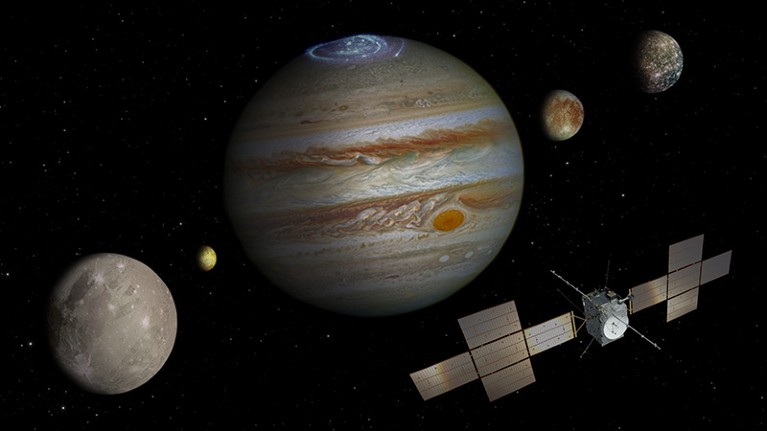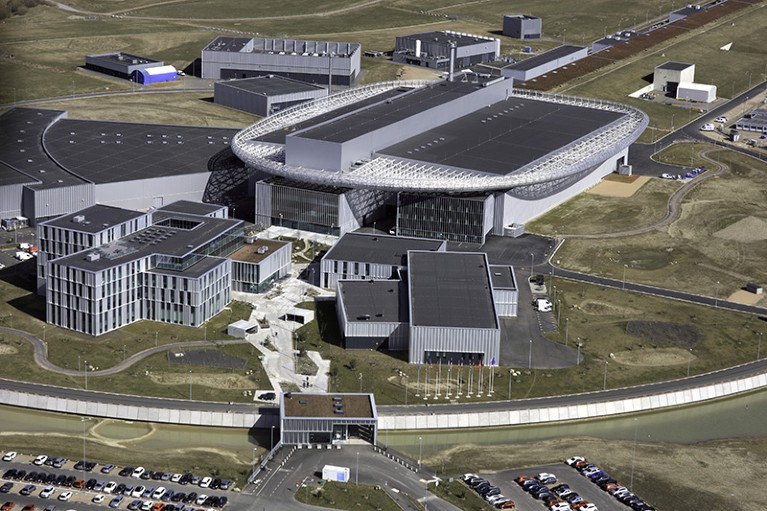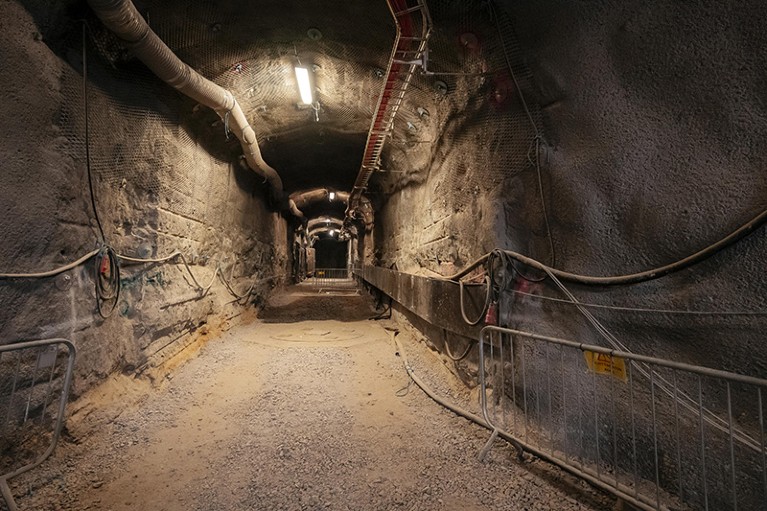The science events to watch for in 2023
来源:Nature | 发布时间:2023-01-11
Next-generation vaccines
Following the successful deployment of mRNA vaccines during the COVID-19 pandemic, a host of them are in development. BioNTech in Mainz, Germany, is expected to initiate first-in-human trials for mRNA vaccines against malaria, tuberculosis and genital herpes in the coming weeks. BioNTech is also collaborating with Pfizer, based in New York City, to trial an mRNA-based vaccine candidate to reduce the rate of shingles. Moderna in Cambridge, Massachusetts, also has mRNA vaccine candidates for the viruses that cause genital herpes and shingles.Nature’s biggest news stories of 2022
In November, BioNTech and Pfizer began their phase I trial of an mRNA vaccine designed to protect against both COVID-19 and influenza. The combination vaccine contains mRNA strands encoding binding proteins for SARS-CoV-2, Omicron BA.4/BA.5 and four influenza variants.
Others are investigating the possibility of delivering COVID-19 vaccines using fast-acting nasal sprays. These sprays have been effective in animals, but the road to human trials could be long.
Advanced stargazing
The first images from the James Webb Space Telescope (JWST) left the world in awe. Some of the JWST’s findings on the early universe were published this year, and astronomers will continue to share the telescope’s results and discoveries on the evolution of galaxies in the year ahead.
The Euclid space telescope, under development by the European Space Agency (ESA), is intended to orbit the Sun for six years and capture photos to create a 3D map of the Universe; it is due to blast off in 2023. So is the Japan Aerospace Exploration Agency’s X-ray Imaging and Spectroscopy Mission — an Earth-orbiting satellite that will detect X-ray radiation from distant stars and galaxies.
The Vera C. Rubin Observatory in Chile is due to start taking images in July 2023. The telescope, which has a special three-mirror design and a camera containing more than three billion pixels of solid-state detectors, will be able to scan the entire southern sky in just three nights. And the world’s largest steerable telescope — the Xinjiang Qitai Radio Telescope (QTT) in Xinjiang, China — will be switched on. The QTT’s fully steerable dish, spanning 110 metres, will enable it to observe 75% of the stars in the sky at any given time.

Pathogen watchlist
The World Health Organization is expected to publish a revised list of priority pathogens. Around 300 scientists will review the evidence on more than 25 viral and bacterial families to identify pathogens that could potentially cause future outbreaks. Research and development road maps for each priority pathogen will outline knowledge gaps, set research priorities and guide the development of vaccines, treatments and diagnostic tests.
Moon missions
Just as NASA’s uncrewed Orion capsule splashed back down to Earth on 11 December, three other missions were launched Moonwards: the United Arab Emirates’ Rashid rover, NASA’s Lunar Flashlight and the Japanese HAKUTO-R Mission 1, which will attempt a soft lunar landing in April. The Indian Space Research Organisation’s third Moon-exploring mission, Chandrayaan-3, will land near the south pole in mid-2023. Next year will also see the first civilian trip to the Moon, with 11 people embarking on a 6-day private space flight aboard the SpaceX rocket Starship.
And, in April, ESA will launch its Jupiter Icy Moons Explorer (JUICE) mission, which will aim to study the environment on the giant gas planet and three of its moons.
CRISPR therapy
Next year might herald the first approval of a CRISPR gene-editing therapy, following promising results from clinical trials that used the CRISPR–Cas9 system to treat β-thalassaemia and sickle-cell disease, two genetic blood disorders. The exagamglogene autotemcel (exa-cel) treatment is being developed by the Massachusetts companies Vertex Pharmaceuticals in Boston and CRISPR Therapeutics in Cambridge. It works by collecting a person’s own stem cells and using the CRISPR–Cas9 technology to edit the faulty gene, before infusing the cells back into the person. Vertex is expected to apply to the US Food and Drug Administration in March for approval to make exa-cel available to people with β-thalassaemia or sickle-cell disease.

Loss and damage
The agreement on a loss-and-damage fund during the 27th United Nations Climate Change Conference (COP27) in Sharm El-Sheikh, Egypt, last month, marked an important step towards climate justice. Under the agreement, wealthy countries that have historically been responsible for high emissions will financially compensate poorer nations, which have borne the brunt of climate change. But the details still need to be worked out. A ‘transitional committee’ is expected to meet before the end of March to make recommendations on how to arrange these funds, which will be presented to delegates from around the world during the United Nations COP28 conference in Dubai next November.
Beyond the standard model
Physicists unveiled the first results of the Muon g — 2 experiment in April this year, and are expected to publish more precise results in 2023. The experiment studies how short-lived particles known as muons behave in magnetic fields, and creates a sensitive test of the standard model of particle physics.
The Jiangmen Underground Neutrino Observatory in southern China will also begin searching for physics beyond the standard model, using a detector kept 700 metres underground to precisely measure the oscillation of neutrinos — electrically neutral subatomic particles.
Another highly anticipated event for particle physicists is the opening of the European Spallation Source (ESS) near Lund, Sweden. The pan-European project will generate intense neutron beams to study the structure of materials, using the most powerful linear proton accelerator ever built. The ESS will welcome its first researchers next year.

Alzheimer’s drugs
In early January, US regulators will announce whether a drug that slowed down the rate of cognitive decline in a robust clinical trial1 can become available to people with Alzheimer’s disease. Developed by the pharmaceutical company Eisai and the biotechnology firm Biogen, lecanemab is a monoclonal antibody that clears amyloid-β protein that builds up in the brain. The clinical trial included 1,795 people with early-stage Alzheimer’s and showed that lecanemab slowed mental decline by 27% compared with a placebo. However, some scientists think this is only a modest benefit and others are concerned about the safety of the drug.
Another Alzheimer’s drug, called blarcamesine — developed by Anavex Life Sciences in New York City — will continue to make its way through clinical trials. Blarcamesine activates a protein that improves the stability of neurons and their ability to connect with each other.
Spent-fuel storage
The world’s first nuclear-waste storage facility is due to begin operating next year in Olkiluoto, an island off the southwest coast of Finland. The Finnish government approved construction of the deep-underground repository in 2015, to safely dispose of spent nuclear fuel. Up to 6,500 tonnes of radioactive uranium will be packed in copper canisters, which will be covered with clay and buried inside tunnels of granite bedrock 400 metres underground. The nuclear material will remain sealed off there for several hundred thousand years — by which time the radiation levels will be harmless.
2023年值得关注的科学事件
新的一年,科学界有哪些事情值得关注? Nature 给出了他们的预测。
新一代疫苗
继在COVID-19大流行期间取得成功的mRNA疫苗之后,许多疫苗正在开发中。在未来几周,德国BioNTech公司有望启动针对疟疾、结核病和生殖器疱疹的mRNA疫苗的首次人体试验。BioNTech还与辉瑞合作,准备试验一种基于mRNA的候选疫苗,以降低带状疱疹的发病率。Moderna公司也正研发针对引起生殖器疱疹和带状疱疹的病毒的mRNA候选疫苗。去年11月,BioNTech和辉瑞公司开始了一种mRNA疫苗的I期临床试验,该疫苗旨在同时预防COVID-19和流感。还有公司正在研究使用迅速起效的鼻腔喷雾来递送COVID-19疫苗,这些鼻腔喷雾的动物实验结果良好,但通往人体试验的道路可能会比较长。
更好地凝望星空
詹姆斯•韦布空间望远镜(JWST)拍摄的第一批图像让世界惊叹不已。除此之外,韦布空间望远镜关于早期宇宙的一些发现也在去年发表了出来,2023年天文学家将继续分享该望远镜关于星系演化的成果和发现。欧洲航天局(ESA)开发的欧几里得太空望远镜将于2023年发射升空,它计划围绕太阳运行6年,并拍摄照片以创建宇宙的3D地图。日本宇宙航空研究开发机构(JAXA)计划发射一颗绕地球运行的卫星,探测来自遥远恒星和星系的X射线辐射。智利的Vera C. Rubin天文台将于2023年7月开始拍摄图像,它的望远镜包括特殊的三镜设计和一个内置超过30亿像素的固态探测器的相机,将能够在短短三个晚上扫描整个南部天空。世界最大的全向可动射电望远镜——中国的新疆奇台射电望远镜(QTT)也将启动,QTT的110米超大口径使它能够在任何时间观测天空中75%的恒星。
病原体“黑名单”
世界卫生组织(WHO)预计将公布一份修订后的重点病原体清单。大约300名科学家将审查超过25个病毒和细菌家族的有关证据,以确定可能导致未来疾病爆发的病原体。针对每一种重点病原体的研发路线图将概述知识缺口,确定研究重点,并指导疫苗、治疗方法和诊断测试的开发。
登月任务
去年11月,美国宇航局新一代登月火箭计划“阿耳忒弥斯1号”将无人驾驶的“猎户座”太空舱送上太空,进行为期25天的无人绕月测试飞行。在“猎户座”太空舱于12月11日成功返回地球的同时,其他三个装置也被发向月球——阿拉伯联合酋长国的拉希德号月球车、美国宇航局的“月球手电筒”探测器和日本的HAKUTO-R任务1号,日本的这个月球探测器将于今年4月尝试在月球上软着陆。印度空间研究组织的第三次探月任务“月船3号”计划于2023年中期在月球南极附近着陆。2023年还将出现首次民间登月之旅,届时将有11人乘坐SpaceX火箭星际飞船进行为期6天的私人太空飞行。今年4月,欧洲航天局将发射木星冰月探测器(JUICE),以研究这颗巨大的气体行星及其三个卫星上的环境。
粒子物理学,超越标准模型
物理学家去年4月公布了μ介子g-2实验的第一个结果,预计将在2023年公布更精确的结果。该实验研究了被称为μ介子的短寿命粒子在磁场中的行为,发现这些粒子比研究人员最初预计的更具磁性。如果进一步结果成立,理论物理学将发生重大变化,即可能存在一种全新的基本粒子等待人们去发现,标准模型也就必须进行更新。此外,中国的江门中微子实验室也将开始寻找标准模型之外的物理现象,研究人员将使用一个位于地下700米的探测器来精确测量中微子的振荡。另一个备受粒子物理学家期待的事件是瑞典的欧洲散裂中子源(ESS)的开放,ESS将于今年迎来第一批研究人员,这个项目将使用有史以来最强大的线性质子加速器,产生强中子束来研究材料的结构。
阿尔茨海默病的治疗药物
今年1月,美国监管机构将宣布lecanemab能否用于阿尔茨海默病患者,这种药物在一项临床试验中可以减缓认知能力的下降。由制药公司Eisai和生物技术公司Biogen开发的lecanemab是一种单克隆抗体,可以清除大脑中积聚的淀粉样蛋白β(Aβ)。上述临床试验包括了1795名早期阿尔茨海默病患者,结果显示,与安慰剂相比lecanemab可将患者认知能力下降速度减缓27%。然而,质疑声也从未消失,一些科学家认为lecanemab的效果有限,另一些则担心这种药物的安全性。另一种名为blarcamesine的阿尔茨海默病药物由美国Anavex公司开发,将继续进行临床试验,blarcamesine可以激活一种能提高神经元稳定性和相互连接能力的蛋白质。
乏燃料存储
乏燃料(spent fuel)是在核反应堆中经受过辐射照射、达到预期燃耗的核燃料,通常由核电厂或研究用核反应堆产生。乏燃料可视为核废料,包含有大量的放射性元素,如何安全处理是个难题。世界上第一个核废料储存设施将于今年在芬兰的Olkiluoto岛投入使用。芬兰政府于2015年批准建造深地下储存库,以安全处理乏燃料。多达6500吨的放射性铀将被装在铜罐中,这些铜罐将被粘土覆盖,并被埋在地下400米的花岗岩基岩隧道中。核废料将在那里被密封存放几十万年,到那时辐射水平将降到无害水平。